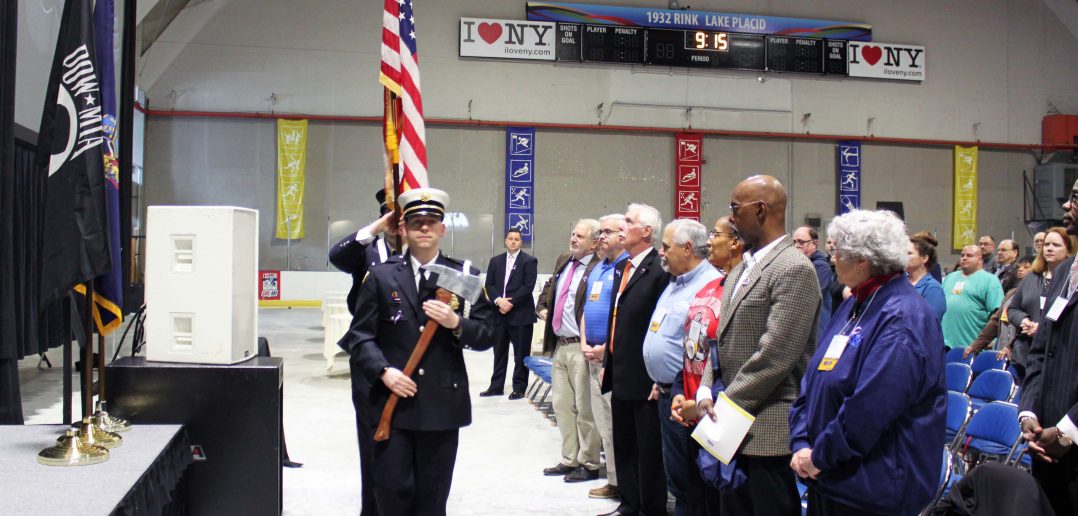LAKE PLACID — When our union is strong, our workplaces are safer.
That was the resounding message at our recent Statewide Conference on Occupational Safety and Health, at which nearly 1,000 of our members got vital training on numerous workplace safety and health issues.
One of the most important functions of our union is to help ensure that management is protecting workers so we can all go home safely.
“Safety and health in the workplace is one of the foundations of the labor movement,” CSEA Executive Vice President Mary E. Sullivan said. “[In April], we observed the 50th anniversary of the death of Dr. Martin Luther King Jr. He was in Memphis [in April 1968]to stand with sanitation workers who were striking to change unsafe working conditions. Fifty years later, we’re still fighting for safer and healthier workplaces.”
While discussing the U.S. Supreme Court case Janus v. AFSCME Council 31 and its expected outcome in favor of anti-union groups, Sullivan also noted the U.S. Bureau of Labor Statistics’ finding that workers are 49 percent more likely to die on the job in right-to-work states than in states without right-to-work.
“That’s an incredible difference and worth keeping in mind as we [build our safety and health knowledge],” she said.
 Mourn the dead; fight for the living
Mourn the dead; fight for the living
The conference included a moving Workers’ Memorial Day observation to mourn fallen workers, including three CSEA members who passed away since our 2016 conference while doing their jobs:
- Donald Schultz, 53, who passed away Oct. 29, 2016 while on the job at the Town of West Seneca Highway Department;
- Gregory Eliopoulos, 54, who passed away Nov. 20, 2017, while working at the City of Watertown Sewage Treatment Plant; and
- Stephen Giorgio III, 63, who died Dec. 13, 2017 from an illness stemming from his work at the Town of Oyster Bay. (See related story).
Plenary speaker Jordan Barab, former U.S. Deputy Assistant Secretary of Labor for the Occupational Safety and Health Administration (OSHA), presented sobering facts about workplace dangers, including severe understaffing and underfunding plaguing federal efforts to keep on top of employers.
“One worker dies every two hours in this country. That’s a 747 [aircraft]crashing every month,” said Barab. “Behind every person killed is a mother, a father, a daughter, a brother.”
Barab warned that with the expected Janus outcome, workplace injuries and deaths would likely increase and that we need to keep fighting for our union.
“The Supreme Court, at the behest of corporate America, may be poised, with the Janus case, to severely undermine the power of public employee unions and with it, the entire labor movement,” he said. “If that happens,
I can guarantee you that not only will the quality of life in the United States suffer, but more workers — especially public employees — will get hurt and die in the workplace.”
Building our power
The conference featured a member engagement visit to members in the Lake Placid area, many of whom had never had union contact outside the workplace.
Over several hours, conference attendees and staff left literature at 120 homes and knocked on 176 doors in the rural area, asking members whether they had concerns about workplace safety and health.
An overwhelming majority of the members we spoke with vowed that they would never quit on our union.
Conference programs included active intruders, the heroin epidemic, back injuries, water quality, tree work, workplace bullying and indoor air quality and mold.
When we stay union, we not only stay strong, but stay safer at work.
“It’s more important than ever for us to stay with CSEA, and even more important than ever that we convince other members in our workplaces to stay with us,” Sullivan said. “When we never quit on CSEA, when we stay union, we stay strong, and we continue to improve our working conditions, our safety, our wages, and our lives.”
— Therese Assalian




